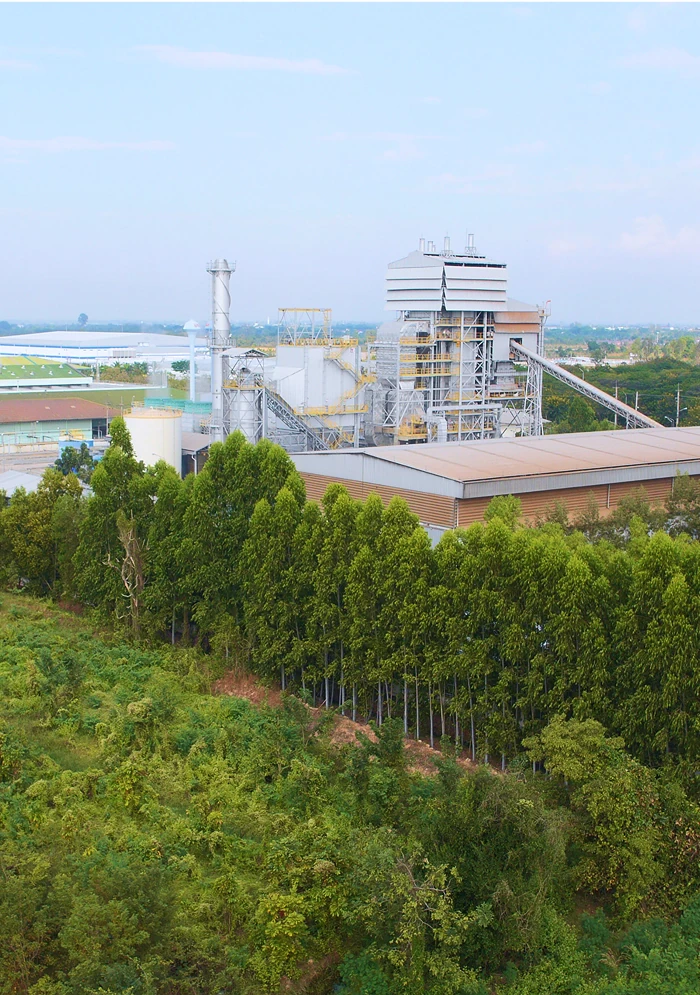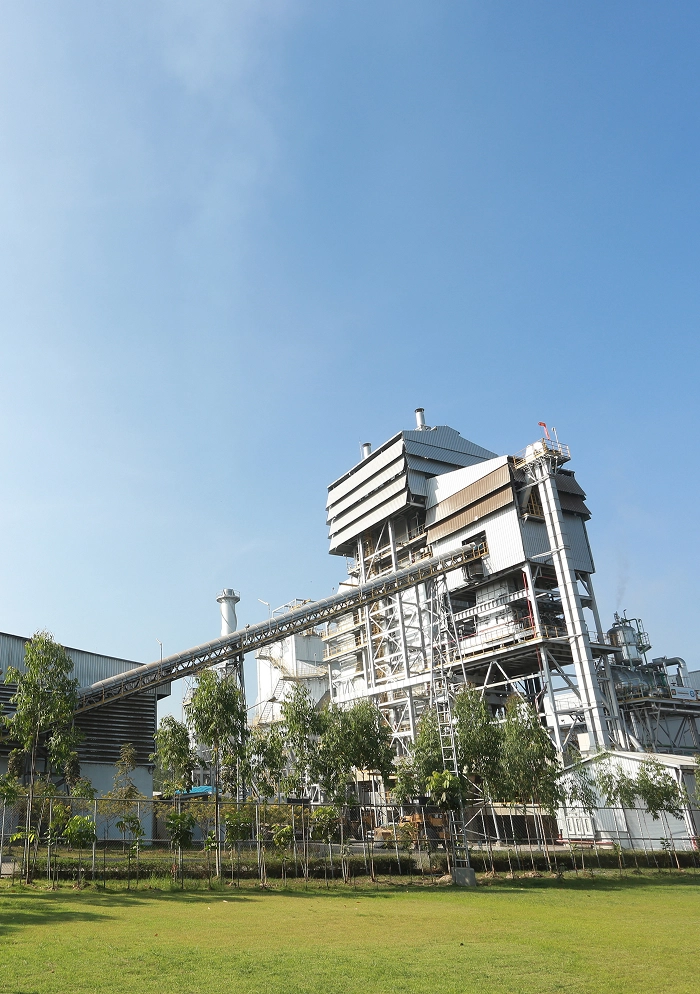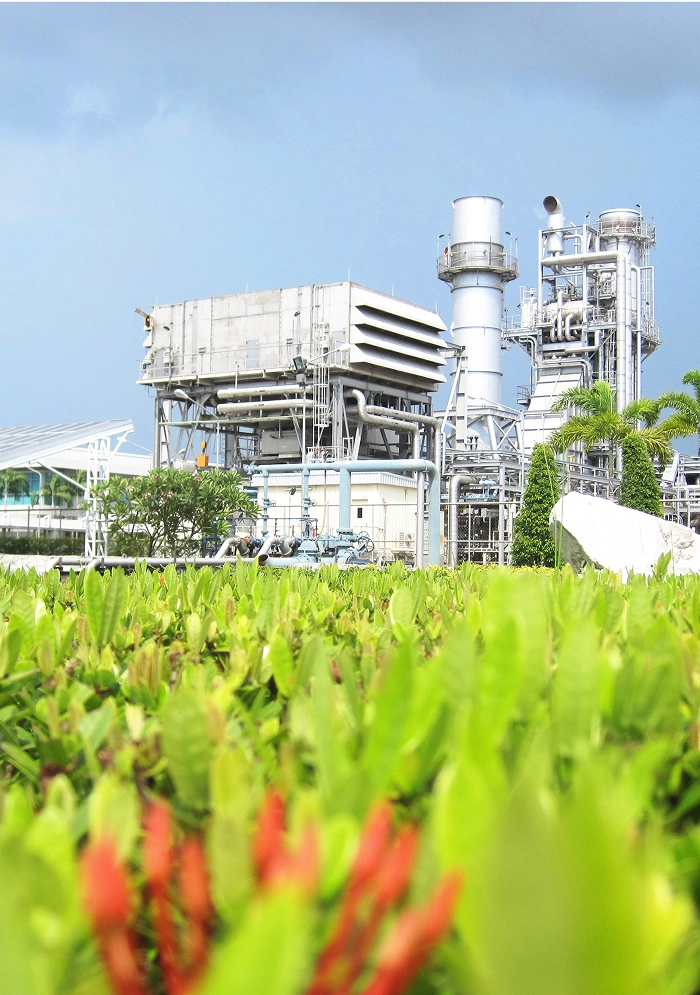ดัชนีเนื้อหา GRI

ดัชนีมาตรฐาน GRI เป็นกรอบการรายงานความ ยั่งยืนที่ครอบคลุม ซึ่งช่วยรับรองความโปร่งใสและความรับผิดชอบขององค์กร
ช่วยให้องค์กรเปิดเผยผลกระทบด้านเศรษฐกิจ สิ่งแวดล้อม และสังคมให้สอดคล้องกับแนวปฏิบัติที่ดีที่สุดในระดับสากล
ดัชนีข้อมูลตามกรอบการรายงาน GRI
| Disclosure | Description | Page |
|---|---|---|
| GRI 102 : General Disclosures | ||
| Organizational Profile | ||
| GRI 102-1 | Name of the organization | Sustainability Report 2024, Page 4 |
| GRI 102-2 | Activities, brands, products, and services | Sustainability Report 2024, Page 4 |
| GRI 102-3 | Location of headquarters | Sustainability Report 2024, Page 4 |
| GRI 102-4 | Location of operations | Sustainability Report 2024, Page 4 |
| GRI 102-5 | Ownership and legal form | Sustainability Report 2024, Page 4 |
| GRI 102-6 | Markets served | Sustainability Report 2024, Page 4 |
| GRI 102-7 | Scale of the organization | Sustainability Report 2024, Page 4 Sustainability Report 2024, Page 69-70 |
| GRI 102-8 | Information on employees and other workers | Sustainability Report 2024, Page 69-71 |
| GRI 102-9 | Supply chain | Sustainability Report 2024, Page 20 |
| GRI 102-10 | Significant changes to the organization and its supply chain | Sustainability Report 2024, Page 5 |
| Strategy | ||
| GRI 102-14 | Statement from senior decision-maker | Sustainability Report 2024, Page 2 |
| GRI 102-15 | Key impacts, risks, and opportunities | Sustainability Report 2024, Page 39-48 |
| GRI 102-55 | Sustainability Policy and Strategy | Sustainability Report 2024, Page 10-15 |
| Ethics and Integrity | ||
| GRI 102-16 | Values, principles, standards, and norms of behavior | Sustainability Report 2024, Page 3 |
| GRI 102-17 | Mechanisms for advice and concerns about ethics | Sustainability Report 2024, Page 53-54 |
| Governance | ||
| GRI 102-28 | Evaluating the highest governance body’s performance | Sustainability Report 2024, Page 4 Sustainability Report 2024, Page 36-38 |
| GRI 102-29 | Identifying and managing economic, environmental, and social impacts | Sustainability Report 2024, Page 9 Sustainability Report 2024, Page 18-19 |
| GRI 102-30 | Effectiveness of risk management processes | Sustainability Report 2024, Page 39-48 |
| GRI 102-31 | Review of economic, environmental, and social topics | Sustainability Report 2024, Page 9 |
| Stakeholder engagement | ||
| GRI 102-40 | List of stakeholder groups | Sustainability Report 2024, Page 28-31 |
| GRI 102-41 | Collective bargaining agreements | Sustainability Report 2024, Page 28-31 |
| GRI 102-42 | Identifying and selecting stakeholders | Sustainability Report 2024, Page 28-31 |
| GRI 102-43 | Approach to stakeholder engagement | Sustainability Report 2024, Page 28-31 |
| GRI 102-44 | Key topics and concerns raised | Sustainability Report 2024, Page 28-31 |
| Reporting practice | ||
| GRI 102-45 | Entities included in the consolidated financial statements | Sustainability Report 2024, Page 1 Sustainability Report 2024, Page 16-19 |
| GRI 102-46 | Defining report content and topic Boundaries | Sustainability Report 2024, Page 1 Sustainability Report 2024, Page 16-19 |
| GRI 102-47 | List of material topics | Sustainability Report 2024, Page 1 Sustainability Report 2024, Page 16-19 |
| GRI 102-48 | Restatements of information | Sustainability Report 2024, Page 1 Sustainability Report 2024, Page 16-19 |
| GRI 102-49 | Changes in reporting | Sustainability Report 2024, Page 1 Sustainability Report 2024, Page 16-19 |
| GRI 102-50 | Reporting period | Sustainability Report 2024, Page 1 Sustainability Report 2024, Page 16-19 |
| GRI 102-51 | Date of most recent report | Sustainability Report 2024, Page 1 Sustainability Report 2024, Page 16-19 |
| GRI 102-52 | Reporting cycle | Sustainability Report 2024, Page 1 Sustainability Report 2024, Page 16-19 |
| GRI 102-53 | Contact point for questions regarding the report | Sustainability Report 2024, Page 1 Sustainability Report 2024, Page 16-19 |
| GRI 200 : Economic | ||
| GRI 201 : Economic Performance | ||
| GRI 103 : | Management Approach | Sustainability Report 2024, Page 62-63 |
| GRI 201-1 | Activities, brands, products, and services | |
| GRI 205 : Anti-corruption | ||
| GRI 103 : | Management Approach | Sustainability Report 2024, Page 49-54 |
| GRI 205-3 | Confirmed incidents of corruption and actions taken | Sustainability Report 2024, Page 49-54 |
| GRI 300 : Environmental | ||
| GRI 301: Materials | ||
| GRI 103 : | Management Approach | Sustainability Report 2024, Page 124-125 |
| GRI 301-1 | Materials used by weight or volume | Sustainability Report 2024, Page 124-125 |
| GRI 301-2 | Recycled input materials used | Sustainability Report 2024, Page 105 |
| GRI 302: Energy | ||
| GRI 103 : | Management Approach | Sustainability Report 2024, Page 123-130 |
| GRI 302-1 | Energy consumption within the organization | Sustainability Report 2024, Page 123-130 |
| GRI 302-3 | Energy intensity | Sustainability Report 2024, Page 123-130 |
| GRI 302-4 | Reduction of energy consumption | Sustainability Report 2024, Page 123-130 |
| GRI 303 : Water | ||
| GRI 103 : | Management Approach | Sustainability Report 2024, Page 110-114 |
| GRI 303-1 | Water withdrawal by source | Sustainability Report 2024, Page 110-114 |
| GRI 303-2 | Water sources significantly affected by withdrawal of water | Sustainability Report 2024, Page 110-114 |
| GRI 303-3 | Water recycled and reused | Sustainability Report 2024, Page 110-114 |
| GRI 304 : Biodiversity | ||
| GRI 103 : | Management Approach | Sustainability Report 2024, Page 141-145 |
| GRI 304-2 | Significant impacts of activities, products, and services on biodiversity | Sustainability Report 2024, Page 141-145 |
| GRI 305 : Emissions | ||
| GRI 103 : | Management Approach | Sustainability Report 2024, Page 131-140 |
| GRI 302-1 | Direct (Scope 1) GHG emissions | Sustainability Report 2024, Page 137-138 |
| GRI 302-3 | Energy indirect (Scope 2) GHG emissions | Sustainability Report 2024, Page 137-138 |
| GRI 302-4 | GHG emissions intensity | Sustainability Report 2024, Page 137-138 |
| GRI 302-3 | Reduction of GHG emissions | Sustainability Report 2024, Page 137-138 |
| GRI 302-4 | Nitrogen oxides (NOx), sulfur oxides (SOx), and other significant air emissions | Sustainability Report 2024, Page 118-120 |
| GRI 306 : Effluents and Waste | ||
| GRI 103 : | Management Approach | Sustainability Report 2024, Page 110-118 |
| GRI 306-1 | Water discharge by quality and destination | Sustainability Report 2024, Page 110-118 |
| GRI 306-2 | Waste by type and disposal method | Sustainability Report 2024, Page 110-118 |
| GRI 306-5 | Water bodies affected by water discharges and/or runoff | Sustainability Report 2024, Page 110-118 |
| GRI 307 : Environmental Compliance | ||
| GRI 103 : | Management Approach | Sustainability Report 2024, Page 109-110 |
| GRI 307-1 | Non-compliance with environmental laws and regulations | Sustainability Report 2024, Page 109-110 |
| GRI 308 : Supplier Environmental Assessment | ||
| GRI 103 : | Management Approach | Sustainability Report 2024, Page 21-27 |
| GRI 308-1 | New suppliers that were screened using environmental criteria | Sustainability Report 2024, Page 21-27 |
| GRI 400 : Social | ||
| GRI 401 : Employment | ||
| GRI 103 : | Management Approach | Sustainability Report 2024, Page 69-73 |
| GRI 401-1 | New employee hires and employee turnover | Sustainability Report 2024, Page 69-73 |
| GRI 403 : Occupational Health and Safety | ||
| GRI 103 : | Management Approach | Sustainability Report 2024, Page 89-96 |
| GRI 403-2 | Types of injury and rates of injury, occupational diseases, lost days, and absenteeism, and number of work-related fatalities | Sustainability Report 2024, Page 89-96 |
| GRI 403-3 | Workers with high incidence or high risk of diseases related to their occupation | Sustainability Report 2024, Page 89-96 |
| GRI 404 : Training and Education | ||
| GRI 103 : | Management Approach | Sustainability Report 2024, Page 79-88 |
| GRI 404-1 | Average hours of training per year per employee | Sustainability Report 2024, Page 79-88 |
| GRI 404-2 | Programs for upgrading employee skills and transition assistance programs | Sustainability Report 2024, Page 79-88 |
| GRI 404-3 | Percentage of employees receiving regular performance and career development reviews | Sustainability Report 2024, Page 79-88 |
| Human Right Assessment | ||
| GRI 412-1 | Operations that have been subject to human right reviews or impact assessment | Sustainability Report 2024, Page 64-68 |
| GRI 412-2 | Employee training on human right policies or procedures | Sustainability Report 2024, Page 64-68 |
| Local Community | ||
| GRI 413-2 | Operations with Significant actual and potential negative impacts on local Communities | Sustainability Report 2024, Page 97-108 |
| GRI 414 : Supplier Social Assessment | ||
| GRI 103: | Management Approach | Sustainability Report 2024, Page 21-26 |
| GRI 414-1 | New suppliers that were screened using social criteria | Sustainability Report 2024, Page 21-26 |
| GRI 419 : Socioeconomic Compliance | ||
| GRI 103: | Management Approach | Sustainability Report 2024, Page 64-65 |
| GRI 419-1 | Non-compliance with laws and regulations in the social and economic area | Sustainability Report 2024, Page 68 Sustainability Report 2024, Page 108 |
| GRI-G4 Electric Utilities Sector Disclosures | ||
| EU 1 | Installed capacity, broken down by primary energy source and by regulatory regime | Sustainability Report 2024, Page 4 |
| EU 5 | Allocation of CO2e emissions allowances or equivalent, broken down by carbon trading framework | Sustainability Report 2024, Page 137-138 |
| EU 10 | Planned capacity against projected electricity demand over the long term, broken down by energy source and regulatory regime | Sustainability Report 2024, Page 125-127 |
| EU 11 | Average generation efficiency of thermal plants by energy source and by regulatory regime | Sustainability Report 2024, Page 125-127 |
| EU 21 | Disaster/Emergency Planning and Response | Sustainability Report 2024, Page 39-48 |
| EU 30 | Average plant availability factor by energy source and by regulatory regime | Sustainability Report 2024, Page 127 |






